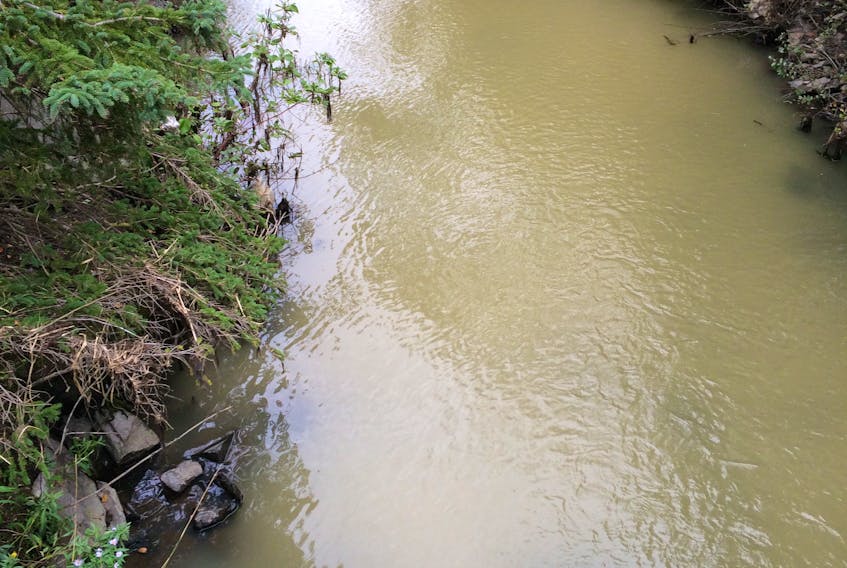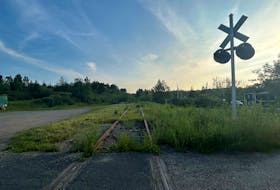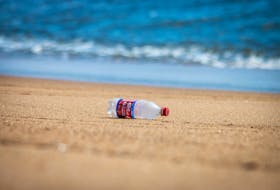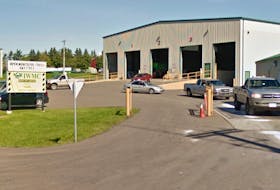I wish them well, I can at least say that.
Last week, CBC had a piece about a Memorial University professor hatching salmon for introduction into Rennies River — eggs from the Exploits are brought into St. John’s, fertilized, and then held in special containers in the river until the small salmon can be released.

Salmon releases have taken place on the river for years — I know the Atlantic Salmon Federation has regularly helped school children grow salmon in classrooms for release through their Fish Friends program, and there were large-scale attempts at seeding the river with salmon in the mid to late 1990s.
But while the projects may be laudable, I think it might be putting the cart before the horse — because rivers in cities don’t get enough respect to be the home for effective breeding stock.
Urban rivers — in St. John’s, Corner Brook, Mount Pearl and Conception Bay South — are often the cheap cousins of those in more wild places, the dumping-site for waste water, organic trash like leaves and lawn clippings, garbage and worse.
Rennies River in St. John’s has been seeded with small salmon for years — but anyone who crosses the river at Elizabeth Avenue after a large rain knows that the imperfect drainage of parking lots and subdivisions turns it into a damaging torrent, ripping up gravel and sediment and redistributing them, sometimes on a weekly basis.
Look at just one of its feeder streams — I happen to cross Leary’s Brook on my way home from work, and on at least 20 days this summer and fall, the river has been so clogged with silt as to be dangerous for any fish.
A simple walk upstream showed the silt to be coming from two different Health Sciences Centre construction projects, one a since-halted berm project being built on the edge of a pond for flood control purposes, the other, building construction where silty water was being pumped out of a construction pit and passed through a silt control system that wasn’t always up to the task. Any rain — not just heavy rains — brought extremely heavy silting from the Health Sciences all the way to where Leary’s Brook joins Long Pond. Road projects further up the river also led to sections of the river being heavily silted at times during this past summer.
It raises a difficult question: if even projects sponsored by government agencies can’t find a way to protect waterways, why do we expect anyone else to even try?
Urban rivers like the Waterford in St. John’s have all sorts of problems: there are still places where sanitary sewage overflows make their way into the river, and further upstream, along the line between St. John’s and Mount Pearl, I’ve seen places where both agricultural waste water and home waste water have been channelled directly into the river — not to mention the annual doses of road salt and fine particulates from parking lot snowclearing and snow dumping.
I’ve heard the apocryphal suggestion that there may even be a formalin leachate problem with cemeteries located above Quidi Vidi Lake.
It raises a difficult question: if even projects sponsored by government agencies can’t find a way to protect waterways, why do we expect anyone else to even try?
Some rivers fare better. The saving grace for Corner Brook’s Humber River is that it’s just so darned big, for example.
But many do not. With everything from plastic waste to shopping carts to informal drainage connections from riverside homes, we put an awful burden on our rivers. We have at least managed to put a dent in old practices like pouring waste oil and paint into the storm sewer system as a handy means of disposal.
Would it be a fine thing to say that our urban rivers are clean and healthy enough for salmon?
It would.
But I think that’s often not the case; there are fish in our urban rivers, but they’re clearly a stressed population — I’ve seen fish with lesions and other deformities in city rivers, and not that uncommonly, either.
Why do our rivers get treated so badly? Some of it is because they’ve had a history of being handy dumping grounds, and their banks and shoulders bear enough damage already that people just don’t think twice about it.
It may just be a case of familiarity breeding contempt.
But contempt there is, and plenty of it.
Russell Wangersky’s column appears in 39 SaltWire newspapers and websites in Atlantic Canada. He can be reached at [email protected] — Twitter: @wangersky.









